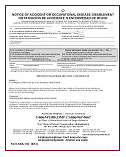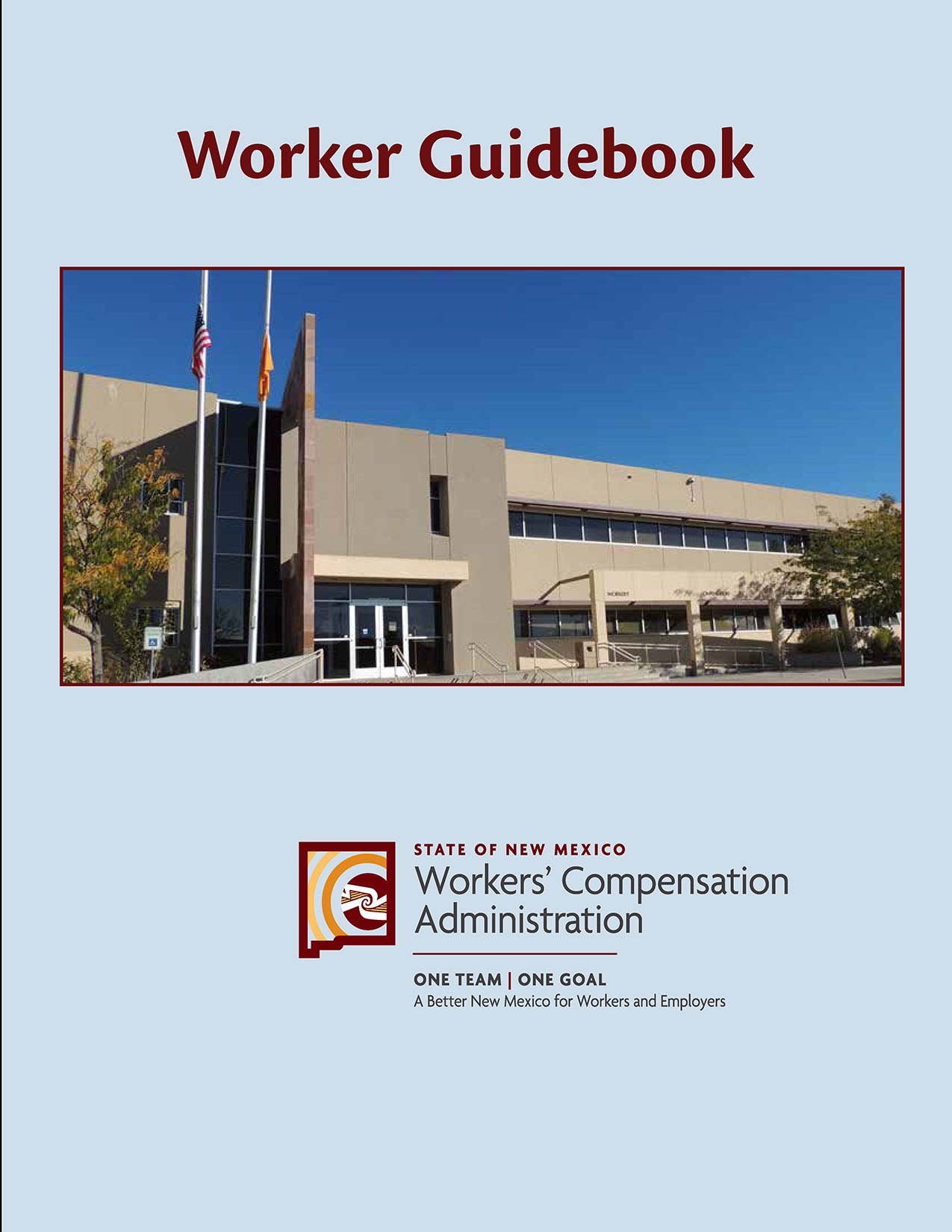Notification
Both workers and employers are required to complete a notification step after a worker suffers a workplace injury.
Worker
- Notify employer within 15 days of accident or injury
- Complete Notice of Accident form or otherwise notify in writing and submit to employer
Note: Your employer should never try to talk you out of submitting a Notice of Accident (NOA) Form. Your employer should never refuse to sign the form or tell supervisors to refuse to sign the form.
If you have any problems reporting the accident, you can contact the ombudsman program at the Workers' Compensation Administration.
Where to Get a Notice of Accident (NOA) Form
 Look for NOA forms posted at the worksite. They are usually found near the WCA Poster, in a public place, such as the break room. Ask a supervisor or the employer where the forms are kept if none are found.
Look for NOA forms posted at the worksite. They are usually found near the WCA Poster, in a public place, such as the break room. Ask a supervisor or the employer where the forms are kept if none are found.
There are blank forms on this website's "Forms and Publications" page. Click download or click on the form image on the left to download the form.
Find out how to fill out the form with our NOA video.
Forms can also be requested by calling the WCA at 1-800-255-7965 or 1-866-967-5667
Click to download the Workers' Guidebook 
Employer
- Sign and date the Notice of Accident form. Employer's signature merely acknowleges receipt by the employer of the form signed by the worker
- Keep one copy and give a copy of the signed, dated form back to worker
- An employer may be considered to have actual notice in other ways, such as witnessing the accident
- Notify your workers' compensation insurer about the accident within 72 hours
- Follow up with insurer to see if they submitted a First Report of Injury (FROI) with the WCA
Click to download A Guidebook for Employers in New Mexico. 
The guidebook can also be found on the Publications page.
Contact the ombudsman program for help in understanding requirements of the law.
![]()
Medical Treatment
Injured workers are entitled to reasonable and necessary medical care for the work-related injury or illness.
Workers should:
- Seek treatment only for job-related injuries or illnesses, using authorized health care providers
- Faithfully follow health care providers’ instructions
- Keep employer and adjuster informed
Employers should:
- Ensure workers get reasonable and necessary medical care
- Notify the worker in writing on who will have first selection of a health care provider: the employer or the worker
- Communicate with the worker and insurer in all stages of recovery
- Provide workplace accommodations for recovering workers, if possible
The Health Care Provider:
- Provides treatment for the workplace injury and determines whether medical care will be long or short term, depending on the nature of injury
- Provides opinions on the nature of the injury, which help the insurer decide whether the injury is compensable
- Provides an opinion on when maximum medical improvement (MMI) has been reached
- Provides an opinion on the degree of physical impairment, which influences how much will be awarded in benefits after a worker reaches Maximum Medical Improvement (MMI)
Find out more about medical care.
Severely injured workers should contact 911 or immediately go to the nearest emergency care facility.
If the Situation Requires Non-Emergency Care
If possible, the worker should ask the employer where to seek medical care from a workplace injury or illness. Employers are required to establish a health care provider (HCP) selection process. Employers should communicate this process to workers, so workers know whether the employer will select the HCP, or allow the worker to make the choice of a HCP. Employers should do this prior to any injury, and preferably, in writing.
The worker should let the health care provider (HCP) know if an injury is work-related. The authorized HCP should bill the employer’s insurer, not a private health insurance plan. The worker should not have to pay out of pocket or through personal insurance. The chosen health care provider is authorized for at least 60 days, after which the party not making the initial selection can opt to select a different provider.
Find out more about the health care provider selection policy.
![]()
Insurance Carrier Pays Bills and Determines Benefits
After a workplace injury, the notified insurer determines whether or not the injury is compensable. If it is, the insurer/adjuster makes payments to the billing health care provider.
The insurance claims adjuster:
- Verifies a workers' compensation accident occurred in the course and scope of a worker's job duties
- Reviews bills and records from the health care provider and pays them
- Determines how much a worker is owed in indemnity benefits and sends checks to the worker for those benefits
Workers should hear from a claims administrator within 10 working days of an accident. If the administrator finds a claim is not compensable and the worker thinks the claims administrator is wrong, the worker should contact a WCA ombudsman. The worker may have to hire an attorney to provide legal representation. Workers can represent themselves as pro se (self-represented) claimants as well.
![]()
Indemnity Benefits
Indemnity benefits provide compensation to workers who lose time from work because of an injury, have to work reduced hours, or sustain a permanent disability.
Indemnity benefits provide partial wages to compensate for the loss of work. Permanently injured workers are provided with compensation for their injuries based on the degree of impairment.
Temporary partial disability (TPD) payments are made to employees who remain employed after a workplace injury or illness, but at a reduced wage, or with reduced hours during the period of temporary disability. Payments are calculated by using a set formula.
Employees who are temporarily unable to work because of an injury are entitled to temporary total disability (TTD) benefits. The temporary total disability amount is also called the compensation rate.
Permanent disability benefits are paid to workers after they have reached MMI. Benefits are based on the worker's disaiblity rate and other factors. Compensation for permanent disability depends on the nature of the injury/illness and the body part(s) affected.
Death benefits are also available for surviving dependents.
Find out more about temporary and permanent indemnity benefits.
![]()
Return to Work
Returning to work is encouraged once the health care provider (HCP) indicates it is all right to do so. There may be work restrictions to minimize risk of re-injury. The employer, insurer and worker should communicate throughout the return-to-work process.
Workers should talk to the HCP, employer and insurer/adjuster about what kind of work was done before the injury and what kind of work is allowed or the worker is capable of post-injury. Workers should talk to all involved parties about the kinds of work the employer can make available to the worker. The worker's ongoing medical condition should be communicated to all parties.
Employers have to offer to rehire the worker if certain conditions are met. The treating HCP has to certify the worker can return to the old job or a similar, modified job. The employer has to be hiring for the same job, which will be paid at previous or lower wages. Finally, the worker must apply for the job.
Return to work is possible even without a full recovery. The job could be the usual job, or alternative work.
A quick return to an active life helps speed recovery and healing.
Find out more about the return-to-work process.